Top Free Blog Hosting Sites for SaaS Teams
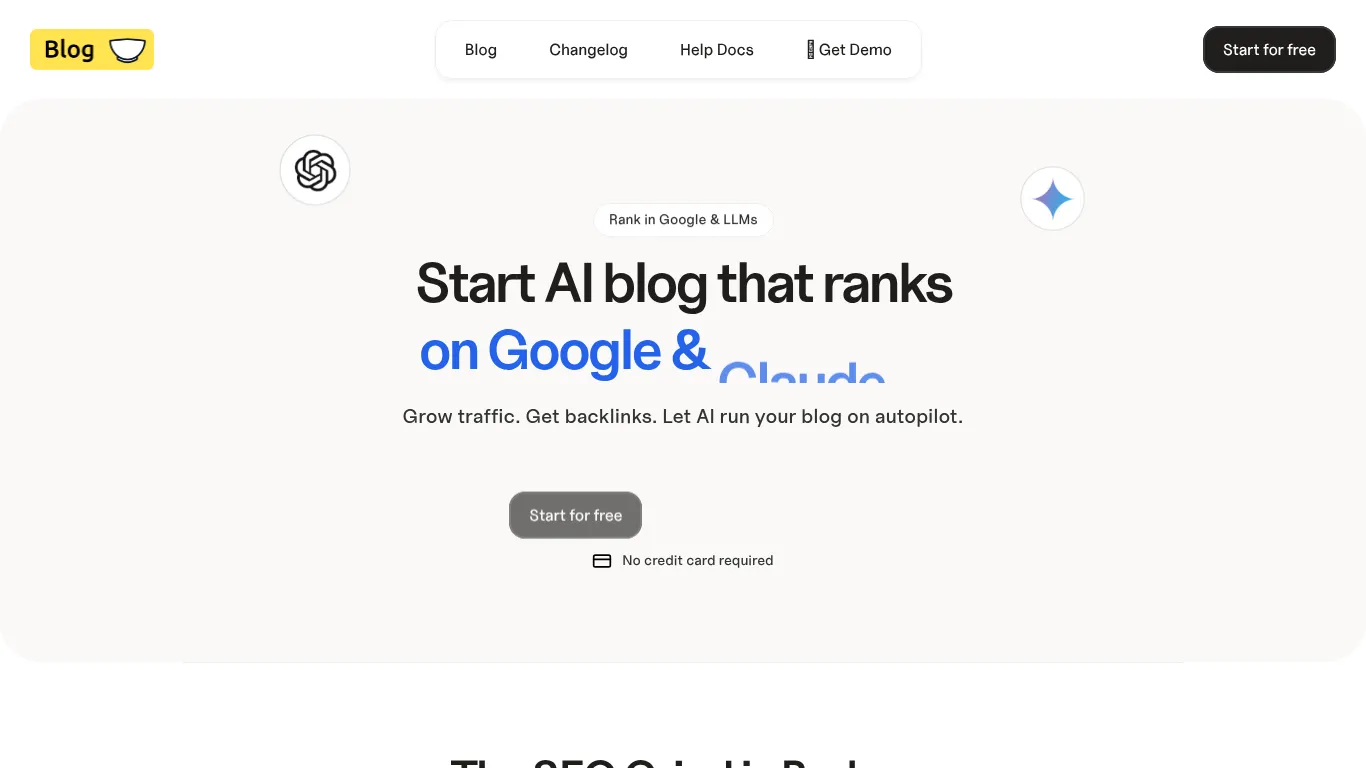
Why this guide matters
What “free” really covers: Most free tiers include hosting, a platform subdomain, basic bandwidth, and standard templates. What it usually doesn’t include are custom domains, advanced SEO controls, premium themes/plugins, or SLA-grade support.
SaaS-first criteria: We evaluate platforms on performance (Core Web Vitals and speed), SEO readiness (metadata, sitemaps, structured content), scalability (limits, migration paths, CDN), collaboration (multi-author workflows, roles/permissions), and control (export options, custom domain support, and portability).
How we picked the tools
Cross-checked sources: We reviewed leading roundups and practitioner insights from Forbes Advisor, Draft.dev, and hands-on community reviews to validate real-world fit for SaaS.
Selection priorities: Tools must offer a genuine free tier, ideally support custom domains, and provide a clear path to scale without painful migrations or lock-in.
What you’ll find below
10 curated free blog hosting options with specific pros/cons for SaaS teams
A consistent, skim-friendly spec table per platform
A final comparison table to help you decide in minutes
BlogBowl - Free start, AI‑automated blog hosting built for SaaS
Spin up a fast, SEO‑ready blog that publishes itself - so your team can focus on product and customers while your content engine runs on autopilot.

Why it’s a fit for SaaS teams
Launch in under a minute with SEO‑optimized templates
AI handles daily posts, internal linking, keyword research, and embedded media
Standout capabilities for growth
Built‑in newsletter and privacy‑friendly analytics
Multi‑blog support (marketing site blog, changelog, help docs) from one dashboard
Where it may fall short
Best for content‑led teams ready to embrace AI automation
Quick setup steps (typical)
Pick a template → connect domain → set brand styles → enable AI schedule
Spec | Details |
|---|---|
Free Tier | Yes (start free to launch and test) |
Hosting | Fully managed blog hosting with SEO‑optimized, fast templates |
Custom Domain (Free Tier) | Supported on paid tiers; free tier uses platform subdomain |
SEO Features | Automated keyword research, metadata, internal linking, XML sitemap, schema‑ready templates |
Performance/CDN | Lightweight pages designed for Core Web Vitals; global delivery via optimized hosting stack |
AI Automation | Daily SEO‑optimized articles, embedded media, internal linking, keyword clustering; auto‑publish across blog, docs, and changelog |
Newsletter | Built‑in newsletter and audience capture |
Analytics | Privacy‑friendly, integrated analytics dashboard |
Multi‑Blog | Unlimited blogs, changelogs, and help docs under one account |
Collaboration | Multi‑author support with roles and workflow controls |
Export/Migration | Content export and domain portability to reduce lock‑in |
Scalability | Designed to scale content volume and traffic without plugin bloat |
Backlinks | Automatic backlink exchange (coming soon) |
Typical Setup Time | Under 60 seconds to first publish |
Best For | SaaS teams that want free blog hosting to start, then scale with AI‑driven content ops |
Limitations | Ideal for teams comfortable with AI‑assisted publishing versus fully manual workflows |
WordPress.com - The familiar CMS with a true free plan

"WordPress powers 43.4% of all websites." - Source
Why it’s a fit for SaaS teams
Fast way to start on WordPress without server ops
Massive ecosystem and migration path to self‑hosted WP later
Standout capabilities for growth
Blocks/Gutenberg editor, basic SEO, and export when you outgrow free
Where it may fall short
Some advanced plugins/themes gated to paid plans
Quick setup steps (typical)
Create site → pick theme → set basic SEO → publish and iterate
Spec | Details |
|---|---|
Free Tier | Yes (true free plan with platform subdomain) |
Hosting | Managed WordPress hosting with global CDN and unmetered bandwidth |
Custom Domain (Free Tier) | Requires paid plan; free uses WordPress.com subdomain |
SEO Features | Core metadata, sitemaps, clean URLs; advanced SEO via paid upgrades |
Performance/CDN | Lightning‑fast managed stack with global CDN and site recovery |
Editor | Gutenberg blocks editor, drag‑and‑drop themes/patterns |
Ecosystem | Massive themes/plugins; straightforward path to self‑hosted WP |
Security | Firewalls, encryption, brute force and DDoS protection |
Storage | Flexible storage allowances on paid plans; media friendly (images/video) |
Collaboration | Multi‑author support; roles/permissions |
Export/Migration | One‑click export; easy migration to WordPress.org |
Scalability | Unmetered traffic, zero‑downtime architecture, room to grow |
Best For | SaaS teams wanting a free start on WordPress with future portability |
Limitations | Many advanced plugins/themes gated to paid tiers; full flexibility on self‑hosted WP |
Medium - Fast distribution on a free, hosted network

"Medium sees roughly 100M+ monthly visits, with recent estimates near 100–127M." - Source
Why it’s a fit for SaaS teams
Built‑in audience discovery for thought leadership
Zero setup, clean reading experience
Standout capabilities for growth
Publications and curation can accelerate reach
Where it may fall short
Limited control over SEO/CTAs and you build Medium’s domain, not yours
Quick setup steps (typical)
Create publication → define tags/topics → publish and syndicate from your main blog
Spec | Details |
|---|---|
Free Tier | Yes (hosted account and publications) |
Hosting | Fully hosted on Medium’s network |
Custom Domain (Free Tier) | Publication domains possible; control is limited |
SEO Features | Basic; restricted control over metadata and structured data |
Performance/CDN | Fast, standardized reading experience across devices |
Editor | Minimal, distraction‑free editor with embeds |
Ecosystem | Publications, curation, and recommendation engine |
Monetization | Partner Program for eligible writers; not ideal for SaaS lead gen |
Collaboration | Publication roles for editors/writers |
Export/Migration | Content export available; portability limited versus CMSs |
Scalability | Network distribution scales reach; you don’t build your own domain |
Best For | Thought leadership, brand awareness, and syndication |
Limitations | Limited SEO/CTA control; audience and authority accrue to Medium |
GitHub Pages (with Jekyll) - Free static hosting with dev‑friendly workflow
Version-controlled publishing your engineers will love - push to main and your blog goes live on a fast, reliable edge.
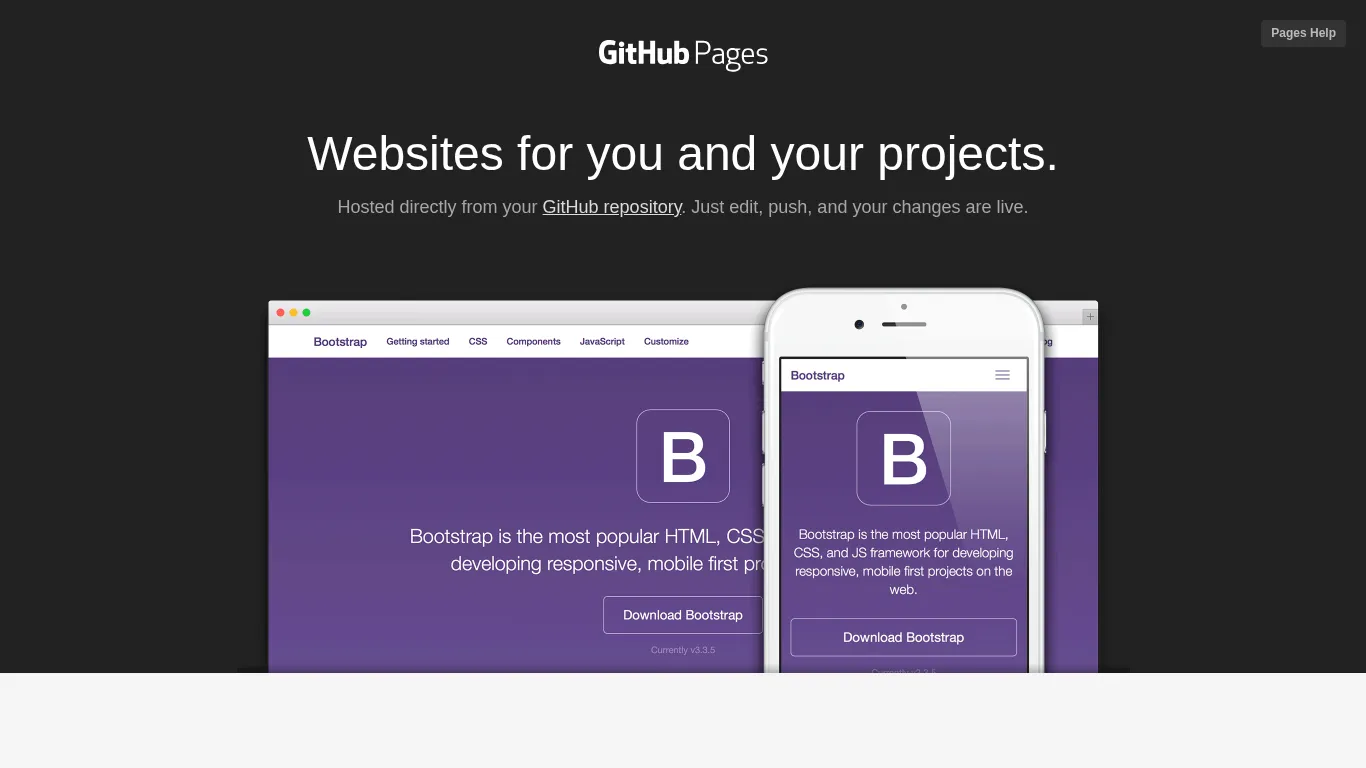
Why it’s a fit for SaaS teams
Free, reliable hosting directly from a Git repo
Markdown + version control + PR workflows engineers love
Standout capabilities for growth
Jekyll themes, fast static performance, easy environment portability
Where it may fall short
Non‑technical teams may need a simple CMS layer or contributor training
Quick setup steps (typical)
Fork Jekyll starter → push to repo → enable Pages → map custom domain
Spec | Details |
|---|---|
Free Tier | Yes (public repos; private also supported with limitations) |
Hosting | Static hosting served from GitHub infrastructure |
Custom Domain (Free Tier) | Yes via CNAME; HTTPS supported |
SEO Features | Jekyll supports metadata, sitemaps, clean URLs; plugins limited on Pages |
Performance/CDN | Fast static delivery with global caching |
Editor | Markdown in Git; local dev with Jekyll; PR reviews |
Ecosystem | Large Jekyll theme ecosystem; GitHub Actions automation |
Collaboration | Git workflows, code review, branch protection |
Export/Migration | Native - content is files in your repo; easy portability |
Scalability | Scales well for static content; heavy dynamic features require workarounds |
Best For | Engineering‑led teams wanting zero‑cost, code‑native publishing |
Limitations | Non‑dev contributors may need CMS overlays (Decap, CloudCannon, etc.) |
Netlify - JAMstack hosting with a generous free tier
Modern CI/CD, previews, and an edge network that make static and hybrid blogs ridiculously fast to ship and scale.
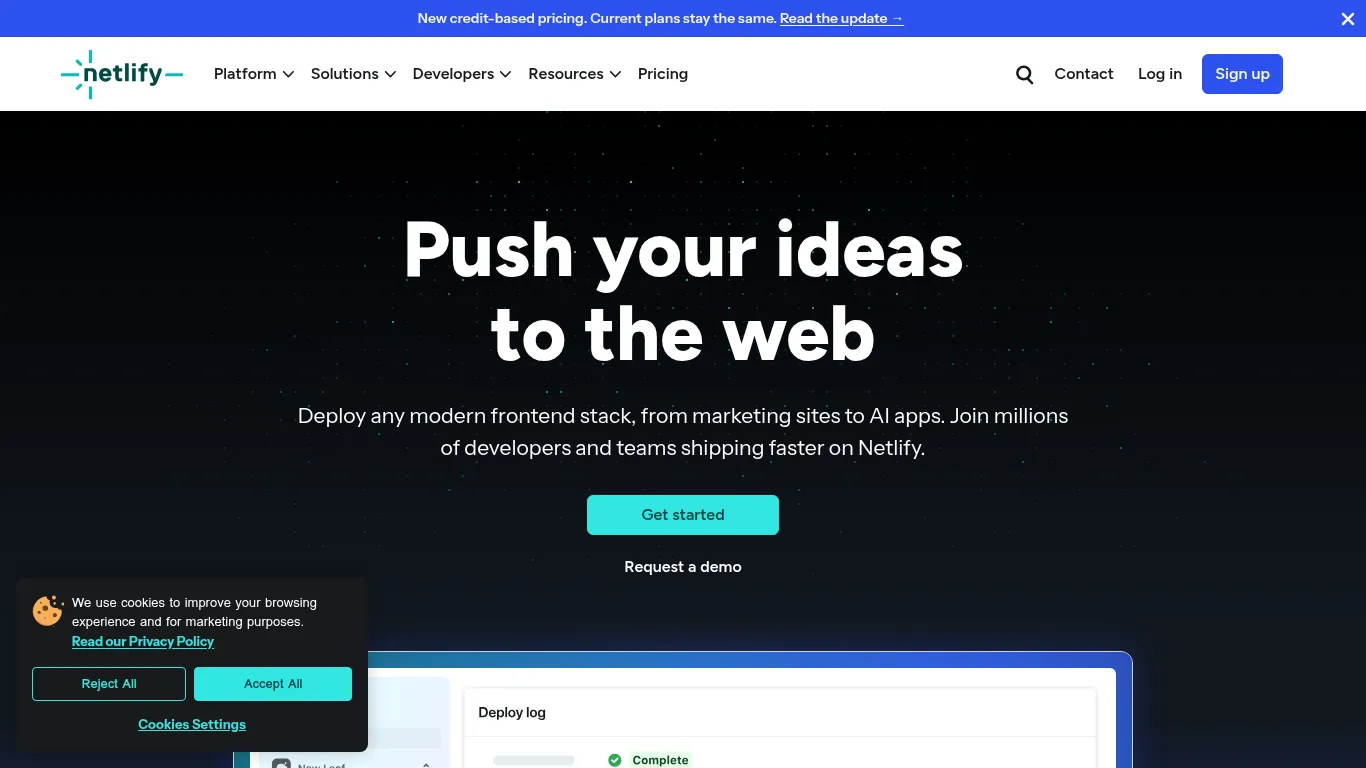
Why it’s a fit for SaaS teams
CI/CD out of the box for Hugo, Gatsby, Next.js, etc.
Global edge network for speed and Core Web Vitals
Standout capabilities for growth
Forms, redirects, previews, and serverless functions
Where it may fall short
Requires a static site generator or framework setup
Quick setup steps (typical)
Connect repo → auto‑deploy main branch → add DNS → enable previews
Spec | Details |
|---|---|
Free Tier | Yes (generous hobby tier for small sites) |
Hosting | Global edge network with automated CI/CD |
Custom Domain (Free Tier) | Supported with free SSL |
SEO Features | Framework-driven SEO; redirects/headers configurable |
Performance/CDN | Sub‑second delivery via globally distributed CDN and caching |
Editor | Code‑first; pair with headless CMS (e.g., Markdown, CMS of choice) |
Ecosystem | Build plugins, serverless/edge functions, deploy previews |
Collaboration | Team deploy previews, env vars, role-based access |
Export/Migration | Static assets in repo; easy portability |
Scalability | Auto‑scaling from hobby to enterprise; 99.99% SLA on paid |
Best For | Engineering‑friendly JAMstack blogs and docs |
Limitations | Needs SSG/framework; non‑dev teams require CMS overlay |
Cloudflare Pages - Free static hosting with edge performance
Edge‑native builds, previews, and a global network that keep your blog fast under any load.
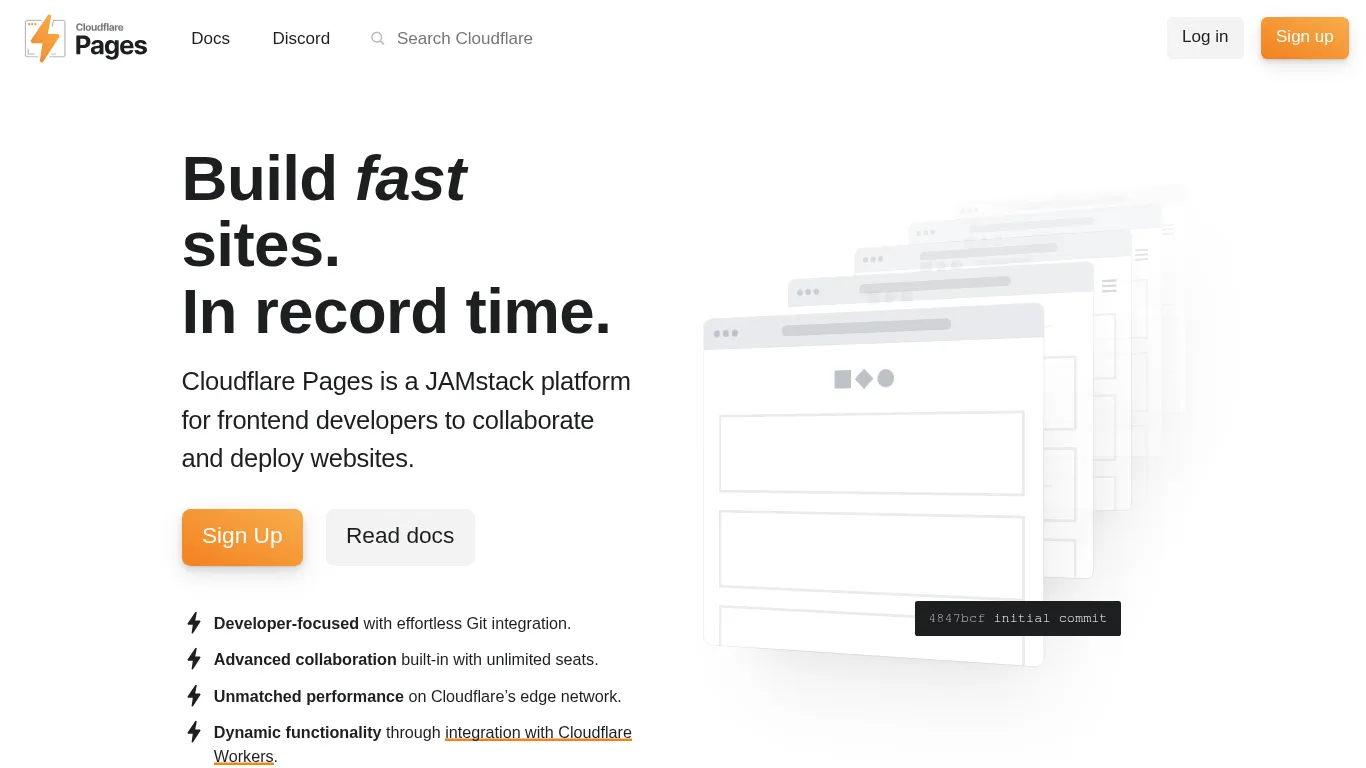
Why it’s a fit for SaaS teams
Edge‑first platform with great performance and caching
Easy previews per PR and automatic builds
Standout capabilities for growth
Workers/Functions for dynamic needs; image optimization/CDN baked in
Where it may fall short
Similar to Netlify: works best if you’re comfortable with SSGs
Quick setup steps (typical)
Connect Git → configure framework preset → deploy → add domain and SSL
Spec | Details |
|---|---|
Free Tier | Yes (generous limits for personal/small projects) |
Hosting | Global edge network with automatic builds from Git |
Custom Domain (Free Tier) | Supported; free SSL certificates |
SEO Features | Framework-dependent; headers/redirects and image optimization |
Performance/CDN | Edge caching, HTTP/3, QUIC; excellent Core Web Vitals potential |
Editor | Code‑first; pair with headless CMS if non‑technical contributors |
Ecosystem | Cloudflare Workers, KV/D1, Images, Queues for dynamic features |
Collaboration | Unlimited seats, preview links for every commit/PR, Access controls |
Export/Migration | Static assets in repo; portable to other hosts |
Scalability | Massive global network; handles spikes effortlessly |
Best For | Engineering teams wanting edge performance with simple ops |
Limitations | Requires SSG/framework familiarity for content workflows |
Blogger - Google‑hosted, free, and supports custom domains
A no‑cost way to publish under your own domain without server or plugin complexity.

Why it’s a fit for SaaS teams
Truly free hosting with a custom domain option
Simple editor; no server or plugin maintenance
Standout capabilities for growth
Google’s infra, basic themes, and AdSense monetization if needed
Where it may fall short
Limited modern SEO controls and design flexibility
Quick setup steps (typical)
Create blog → choose theme → connect domain → publish
Spec | Details |
|---|---|
Free Tier | Yes (fully free with blogspot subdomain) |
Hosting | Google‑hosted; no server management |
Custom Domain (Free Tier) | Supported; map your own domain |
SEO Features | Basic metadata and indexing controls; limited structured data |
Performance/CDN | Solid Google infrastructure; reliable uptime |
Editor | Simple WYSIWYG + HTML editing |
Ecosystem | Limited themes/widgets; AdSense integration |
Analytics | Built‑in stats; optional Google Analytics integration |
Collaboration | Multiple authors/admins per blog |
Export/Migration | Export posts/pages via XML; domain portability |
Scalability | Handles typical SMB/SaaS blog traffic reliably |
Best For | Budget‑conscious teams needing a free custom‑domain blog |
Limitations | Constrained design/SEO flexibility vs. modern CMSs |
Hashnode - Free dev‑first blogging with custom domains
Developer‑centric publishing with free custom domains and instant distribution to a built‑in tech audience.
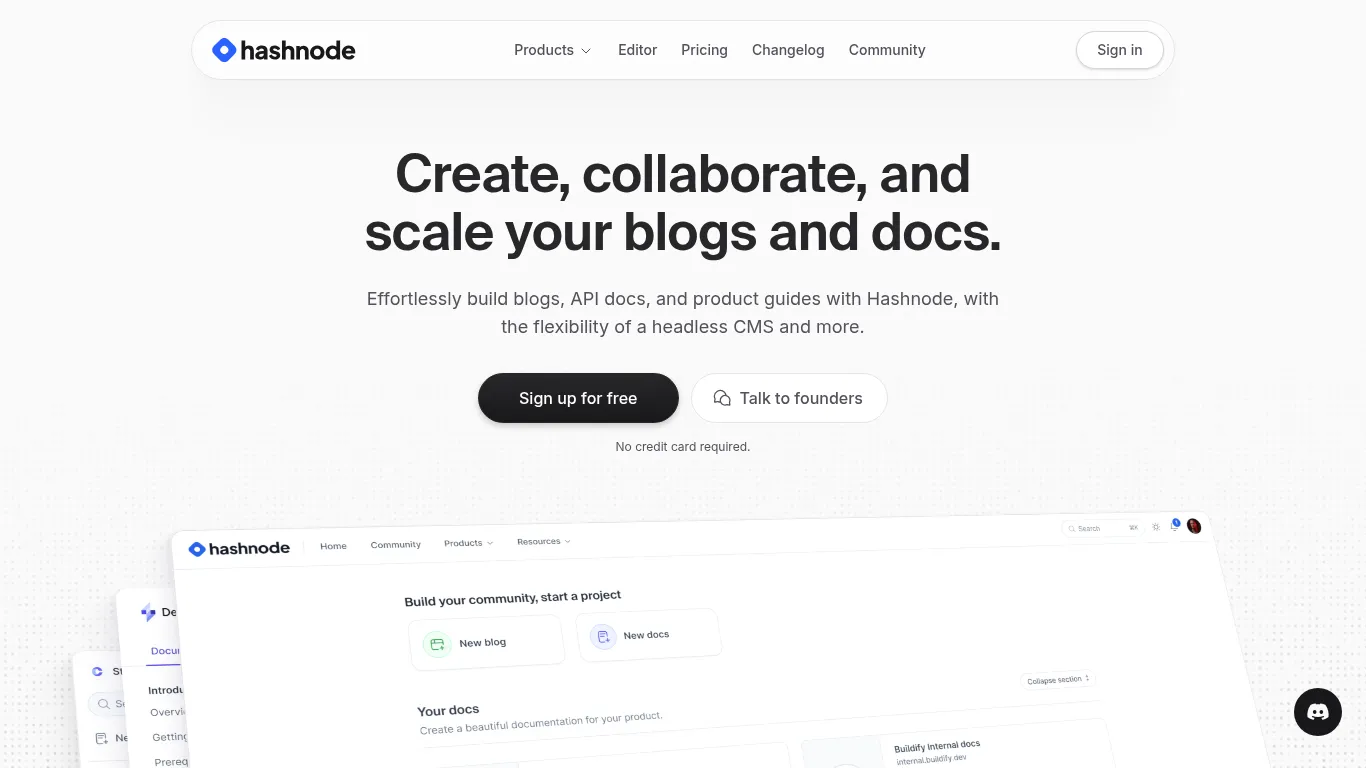
Why it’s a fit for SaaS teams
Built for engineering content; great for developer relations
Free custom domain and instant community distribution
Standout capabilities for growth
Series, tags, integrations with GitHub; clean DX and SEO basics
Where it may fall short
Less control than a full CMS; best for technical storytelling
Quick setup steps (typical)
Create blog → map domain → publish and cross‑post to community
Spec | Details |
|---|---|
Free Tier | Yes (blogs on custom domains or sub‑paths) |
Hosting | Fully hosted; fast defaults optimized for developers |
Custom Domain (Free Tier) | Yes, including sub‑paths like /blog |
SEO Features | SEO‑optimized out of the box; canonical tags; clean URLs |
Performance/CDN | Global delivery; modern frontend with image optimization |
Editor | Block‑based WYSIWYG + Markdown; real‑time collaboration |
Ecosystem | GitHub sync, tags, series, integrations; dev community distribution |
AI Features | AI‑assisted writing, rephrasing, and docs search |
Collaboration | Inline comments, roles, multi‑author |
Export/Migration | Content export; headless options for custom UI |
Scalability | Built for growing engineering blogs and docs |
Best For | Dev‑rel teams and technical blogs that need instant reach |
Limitations | Less granular control vs. a full CMS or custom stack |
Substack - Free newsletter + blog hub on a hosted stack
Spin up a blog-plus-newsletter hub in minutes - perfect for founder updates, product notes, and audience building.

Why it’s a fit for SaaS teams
Combine blog + email list with minimal setup
Great for founder‑led content and product updates
Standout capabilities for growth
Paid subscriptions if you monetize content; simple analytics
Where it may fall short
Limited design/SEO control; exports exist but keep your main site elsewhere
Quick setup steps (typical)
Create publication → import contacts/posts → publish and email
Spec | Details |
|---|---|
Free Tier | Yes (hosted publication with email delivery) |
Hosting | Fully hosted; no server or ESP setup required |
Custom Domain (Free Tier) | Supported; uses Substack’s infrastructure |
SEO Features | Basic; limited control over metadata and structure |
Performance/CDN | Fast hosted delivery; optimized reading UX |
Editor | Simple WYSIWYG with embeds; email‑first workflow |
Ecosystem | Built‑in network discovery and recommendations |
Monetization | Paid subscriptions with platform revenue share |
Analytics | Basic subscriber and post performance metrics |
Collaboration | Multi‑author publications; roles/permissions |
Export/Migration | Export subscribers and posts; keep core site elsewhere |
Scalability | Solid for newsletters at scale; keep web CMS for advanced needs |
Best For | Founder/PMM newsletters and product update streams |
Limitations | Limited branding/SEO; monetization takes rev share |
Beehiiv - Newsletter‑first platform with a solid free tier
A growth‑oriented newsletter CMS that doubles as a public blog - ideal for shipping product updates and building your audience from day one.
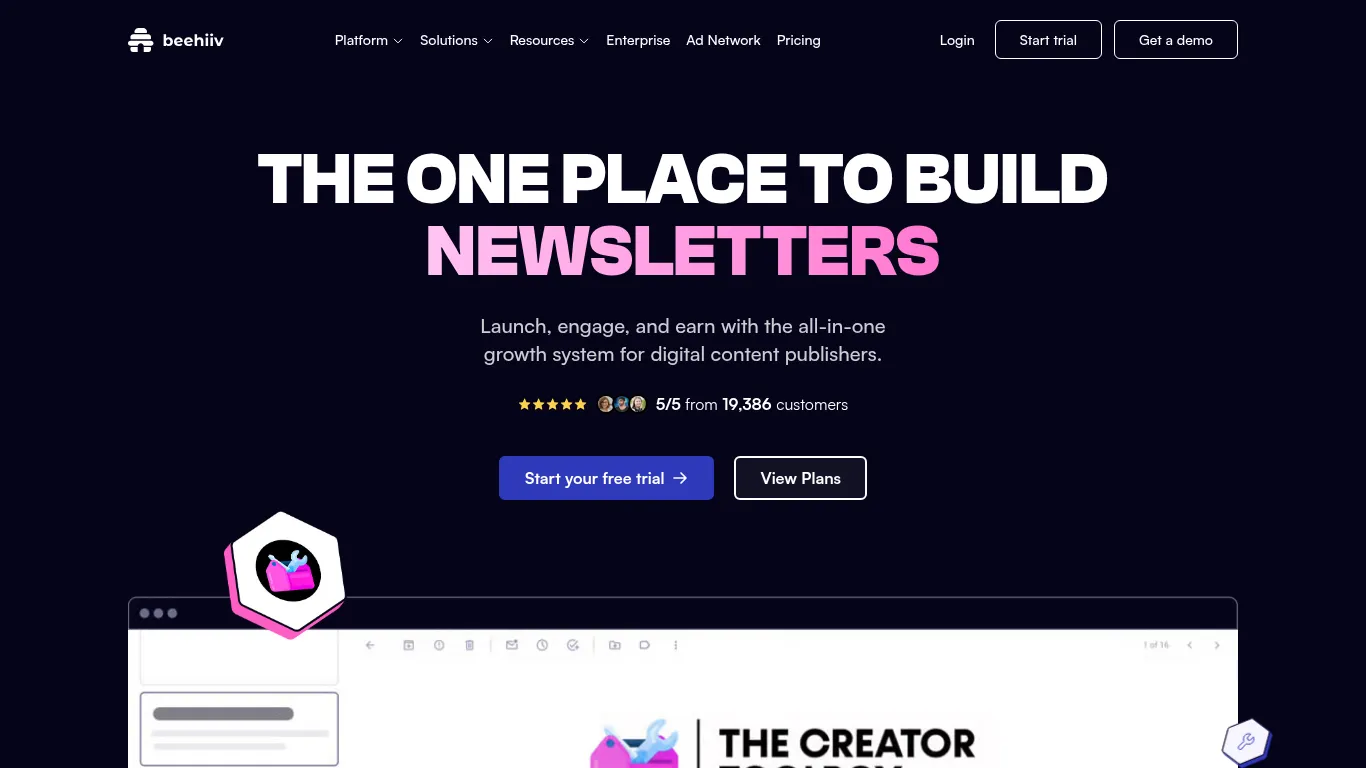
Why it’s a fit for SaaS teams
Host posts publicly and email subscribers from one place
Growth tools (referrals, recommendations) for audience building
Standout capabilities for growth
Segmentation, automation, and no‑code templates
Where it may fall short
Site customization and deep SEO are more limited than full CMSs
Quick setup steps (typical)
Create publication → set branding → publish → connect domain when ready
Spec | Details |
|---|---|
Free Tier | Yes (starter tier for new publications) |
Hosting | Fully hosted newsletter + web hub |
Custom Domain (Free Tier) | Supported on paid tiers; start on platform subdomain |
SEO Features | Basic SEO, clean URLs, public post pages |
Performance/CDN | Fast defaults and global delivery |
Editor | Visual newsletter builder; no‑code website pages |
Ecosystem | Referrals, recommendations, boosts, ad network |
Monetization | Built‑in ads; Stripe integrations |
Analytics | 3D analytics, audience segmentation, growth insights |
Automation | Drip sequences, scheduling, AI recommendations |
Collaboration | Multi‑author support and roles |
Export/Migration | Subscriber and content export |
Scalability | Designed to grow lists from zero to large audiences |
Best For | Founder‑led updates, product notes, and audience growth |
Limitations | Less site/SEO control than a full CMS stack |
Overall Comparison Table
How to read this table
Hosting model: Managed CMS, Static JAMstack, or Community platform
Free tier notes: What you get at $0 and common upgrade paths
Custom domain availability and SEO control at the free level
Scalability outlook for growing SaaS teams
Platform | Hosting model | Free tier notes | Custom domain at free | SEO control (free) | Scalability outlook | Best for | Key limitations |
|---|---|---|---|---|---|---|---|
BlogBowl | Managed CMS (AI‑automated) | Start free to launch and test; upgrade for custom domain and advanced controls | No (supported on paid) | Strong automated SEO; templates optimized | Built to scale content and traffic with AI and multi‑blog | SaaS teams wanting automated content ops | Suits teams embracing AI; custom domain on paid |
WordPress.com | Managed WordPress CMS | True free plan with subdomain; upgrade for plugins/custom domain | No (paid required) | Basic SEO; expand via paid tiers | Excellent - clear path to self‑hosted WP | Teams starting on WP with easy migration later | Advanced themes/plugins gated to paid |
Medium | Community platform (hosted network) | Free publishing and publications; built‑in distribution | Limited (publication domain options, restricted control) | Limited metadata/CTA control | Scales reach via network, not your own domain | Thought leadership and syndication | You build Medium’s authority, not yours |
GitHub Pages + Jekyll | Static JAMstack | Free static hosting from a Git repo | Yes (CNAME + HTTPS) | Jekyll metadata/sitemaps; plugin limits | Excellent for static content; repo‑native portability | Engineering‑led blogs/docs | Non‑dev contributors need training or CMS overlay |
Netlify | Static JAMstack platform | Generous free tier; CI/CD, previews | Yes (free SSL) | Framework‑driven; headers/redirects supported | Auto‑scales from hobby to enterprise | JAMstack blogs needing CI/CD + edge | Requires SSG/framework and code‑based workflow |
Cloudflare Pages | Static JAMstack (edge) | Free with Git builds, previews, unlimited seats | Yes (free SSL) | Framework‑dependent; image/CDN optimization | Massive edge network; great Core Web Vitals | Dev teams prioritizing edge performance | Similar to Netlify - best with SSG familiarity |
Blogger | Managed CMS (Google) | Fully free with blogspot subdomain | Yes (free mapping) | Basic controls; limited structured data | Reliable for standard blog traffic | Budget‑conscious teams needing simple blog | Design/SEO flexibility is limited |
Hashnode | Managed dev platform | Free blog with custom domain/sub‑path and community reach | Yes (including sub‑paths) | Solid basics; canonical tags; clean URLs | Strong for growing dev‑rel content | Dev‑rel and technical storytelling | Less granular control than full CMS |
Substack | Hosted newsletter + blog | Free publication with email delivery; optional paid subs | Yes (uses Substack infra) | Basic SEO; limited branding | Good for list growth; keep main site elsewhere | Founder updates and product notes | Revenue share; limited design/SEO control |
Beehiiv | Hosted newsletter + blog | Solid free tier for new publications | No (paid required) | Basic SEO; public post pages | Scales lists with referrals/ads/automations | Audience growth with newsletter‑first strategy | Less site/SEO depth than full CMS |
Conclusion
What to pick, when
Need speed + control without devops: BlogBowl first, then WordPress.com for plugin ecosystem
Engineering‑led teams: GitHub Pages/Netlify/Cloudflare Pages with Jekyll/Hugo/Next
Audience building fast: Medium/Hashnode (syndicate), Substack/Beehiiv for newsletter‑led growth
Final recommendation
Launch on BlogBowl to get a fast, SEO‑ready blog live now while AI handles the heavy lifting. As you scale, layer in channels like Hashnode or Substack for distribution without moving your core blog.
Next steps
Shortlist 2–3 options from the comparison table
Spin up a free sandbox on your favorite and publish your first post this week

![Top Free Blog Hosting Sites [for SaaS Teams]](https://blog.blogbowl.app/rails/active_storage/blobs/redirect/eyJfcmFpbHMiOnsiZGF0YSI6MzUwLCJwdXIiOiJibG9iX2lkIn19--058610f2ea360a75b594a8f97ce8c355107aed94/Top%20Free%20Blog%20Hosting%20Sites%20%5Bfor%20SaaS%20Teams%5D-cover.webp)
